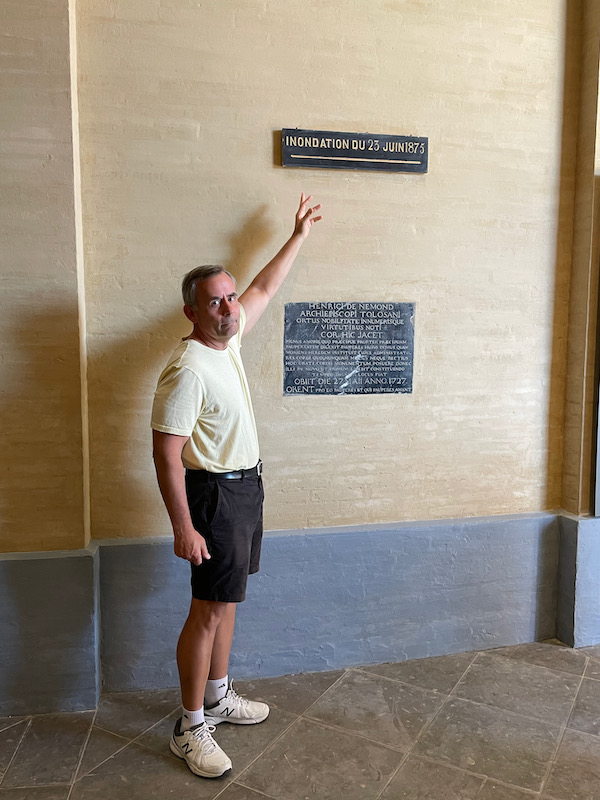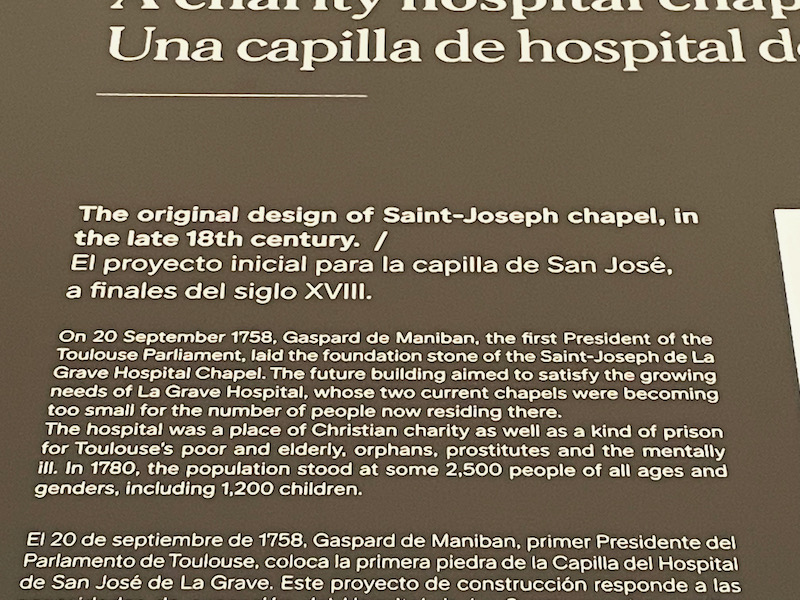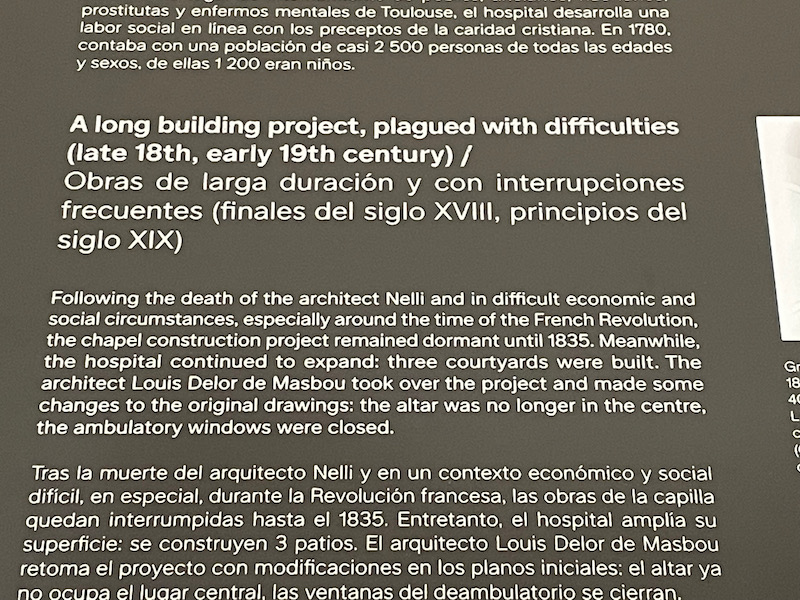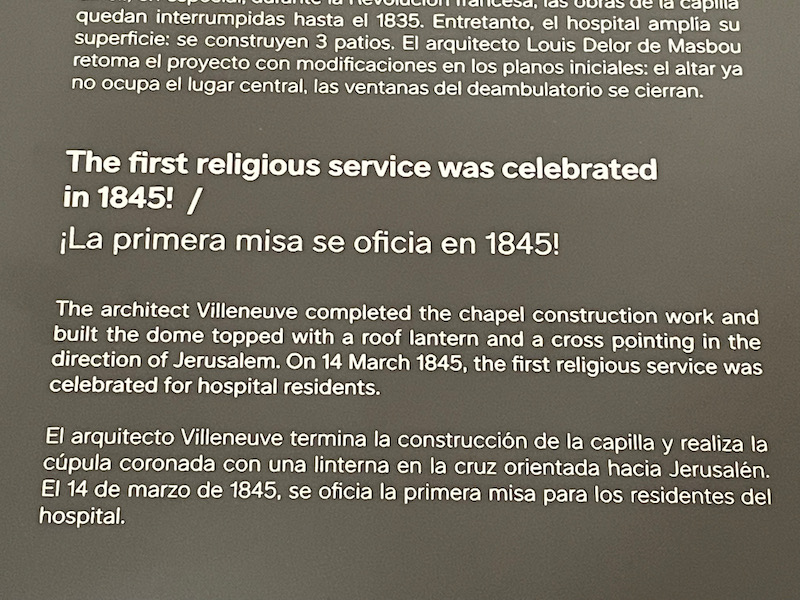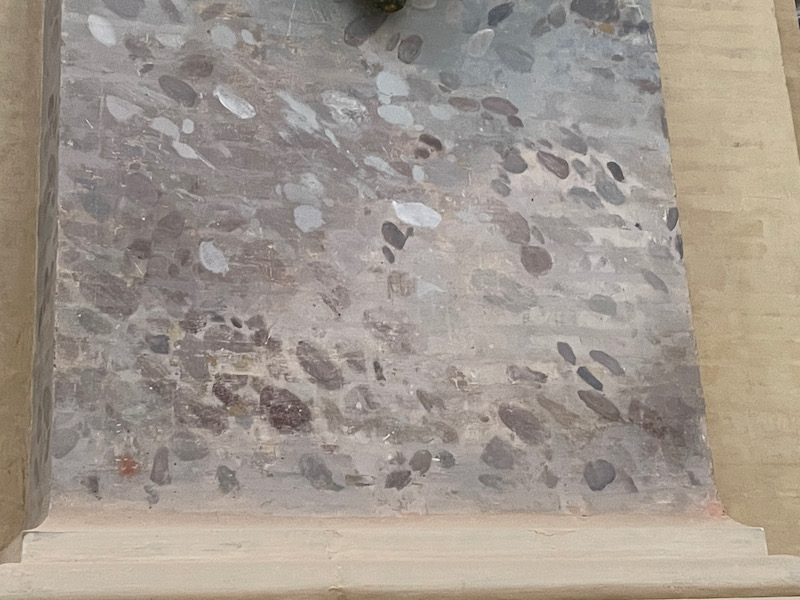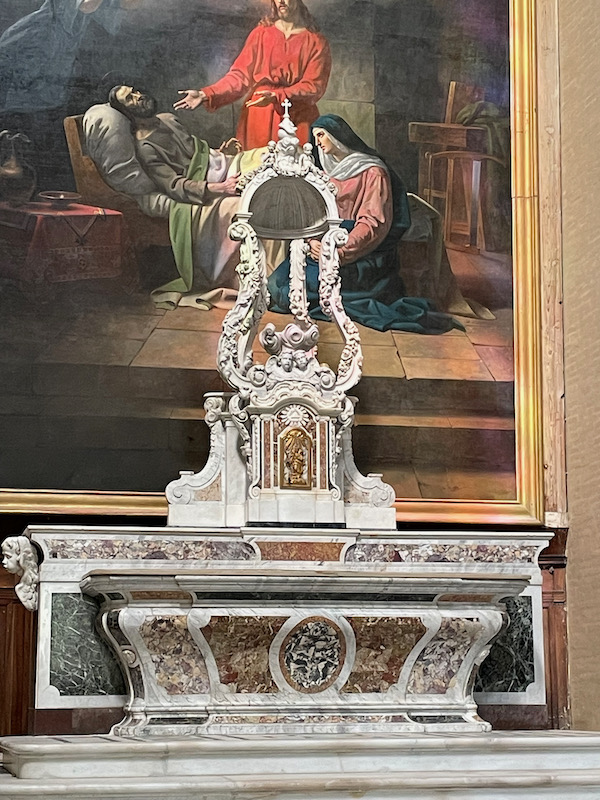Our Blog - The Chapel of the Hôpital La Grave, Toulouse
The La Grave hospital was first mentioned in a charger in 1197 and is in the Saint-Cyprien district on the left bank of the Garonne. During the Middle Ages, it was used for those sick with the plague since it was on the other side of the river from the main part of the city, Then starting in 1647, it was a place where beggars, prostitutes and the insane were sent, basically to move them where they couldn't be seen "in the city".
While it is still a hospital, it is probably best known for its famous Saint-Joseph de la Grave chapel. It is one of the most famous monuments of Toulouse because it is easily identifiable from the banks of the Garonne. The first stone of the Chapelle de la Grave was laid in 1758. Work was often interrupted and was not completed until 1845.
It reopened during the Journées de Patrimoine this year (2022) after several years of work, including both structural changes and upgrades of electric, heating, and lighting. There was also interior restoration of fake marble wall decorations, paintings, sculptures, stained glass windows and furniture. They also have added what they call a "museographic journey" with 12 stations around the edges containing various things to understand the history of the building and neighborhood. There were too many people for us to wait around for them to be available, but you can listen to stories of people who lived here and discuss life at various times. During the work, it was also open with guided visits for the Journées de Patrimoine in 2018. I have a set of pictures from both of those that I have put together, in some cases to compare the before-and-after pictures.
The exterior hasn't changed much, but you can see how the bricks are cleaner and "brighter".

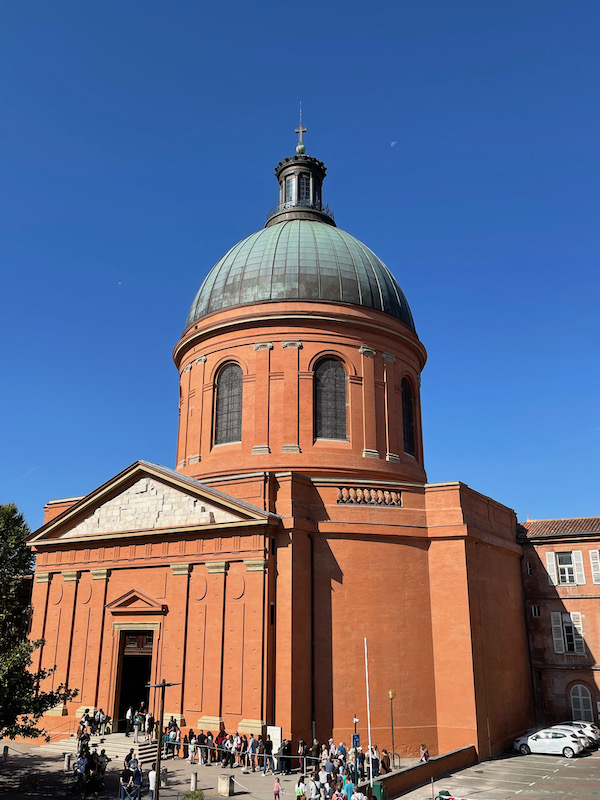





Main altar with painting 2018



2022
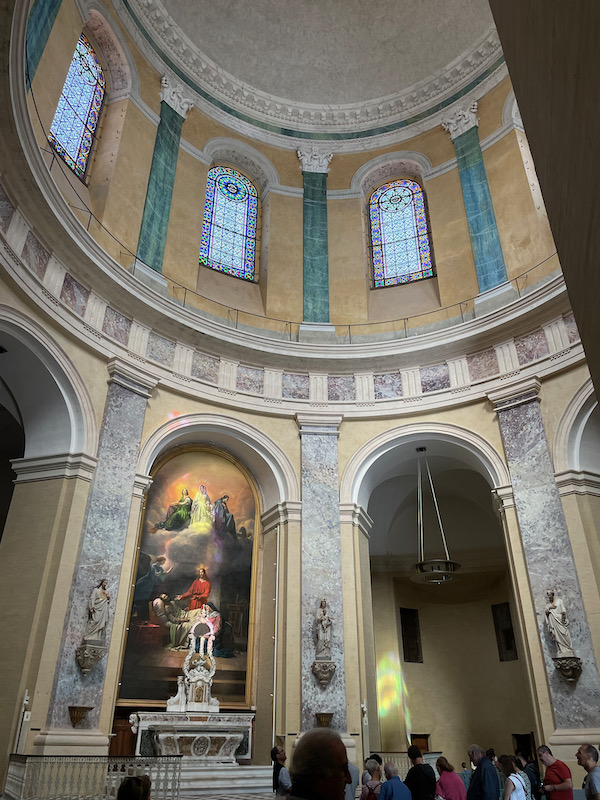

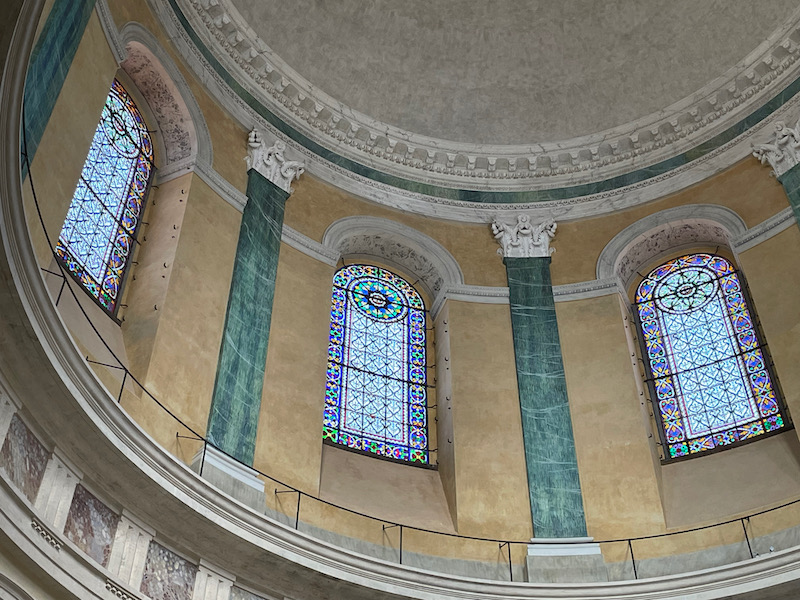
Saint Antoine (2018 then 2022)

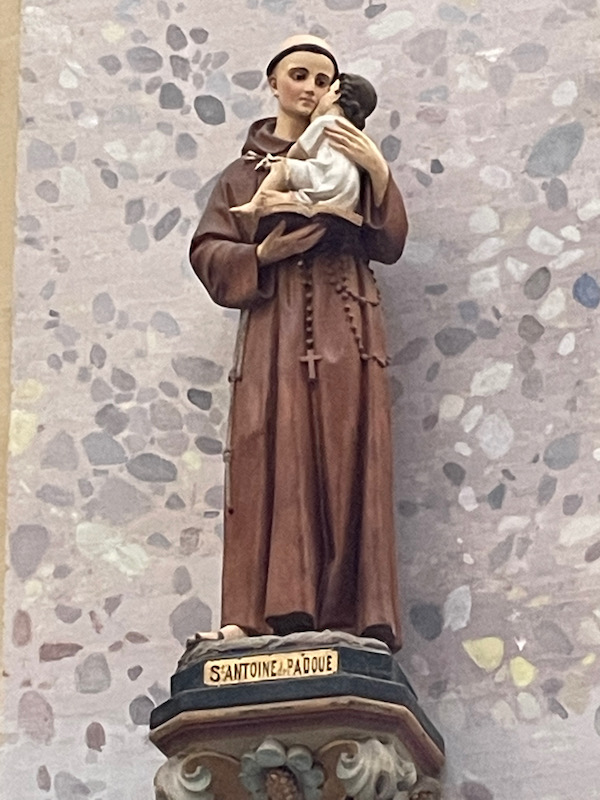
Sainte Germaine (2018 then 2022)

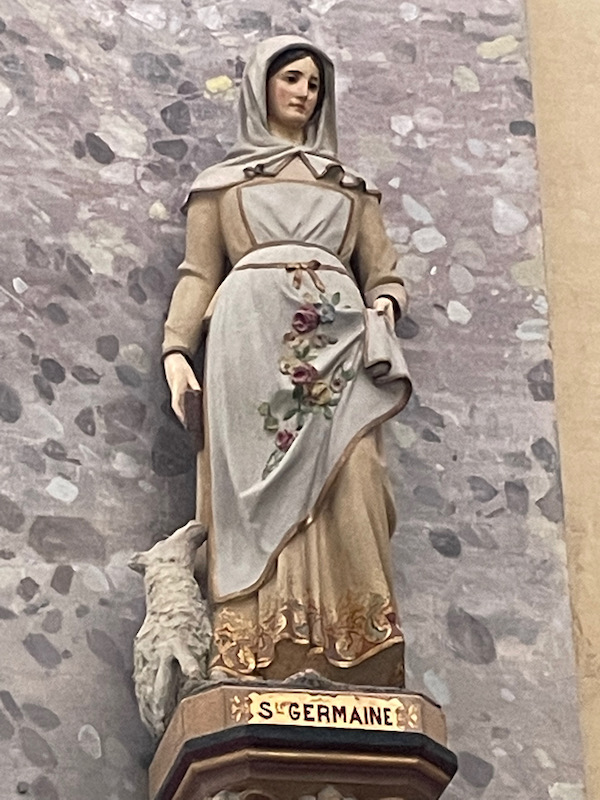
2022
I didn't remember seeing this in 2018, but in 2022, we happened to notice this flood-level indicator, from the historic flood of June 1875. It destroyed approximately 1400 houses and all but one of the bridges over the Garonne (Pont Neuf remained). The Saint-Cyprien district was the hardest hit as it was, at that time, a poorer district and the land was, in general, lower.
